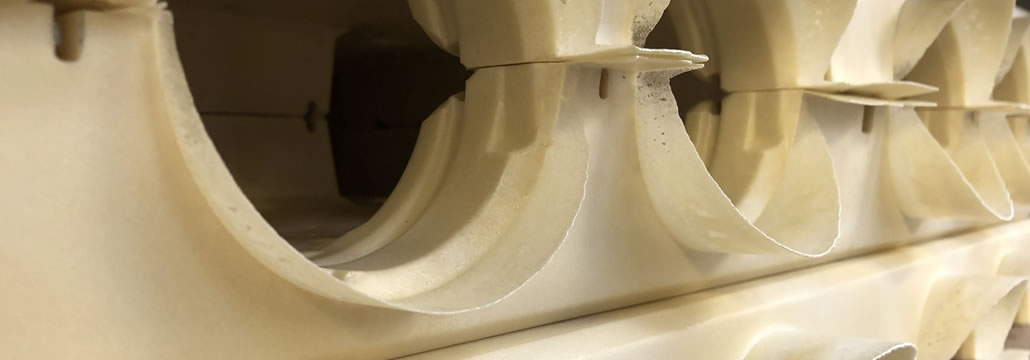
Insulation Foams
Polyurethane insulation foam moulding uses formulas with excellent thermal properties that create closed cell “air pockets” within the component when moulded. This makes the part ideal for shielding against high or low temperatures and is commonly used for cooling apparatus, like refrigerators and beer fonts, or heating appliances.
Insulation foam can be used for a range of components and can be manufactured in a multitude of different densities, to be as tough as plastic with integral structural capabilities, or as soft as a sponge.
Advantages
- Excellent thermal properties
- Lightweight and flexible
- Low Density
- Low tooling / prototype costs
- Good abrasion and chemical resistance
- Excellent noise insulation properties
- Good dimensional stability
- Flame retardant
Typical polyurethane material specifications
| Elastomer | Elastomer | Flexible PU foam | Structural rigid foam | Structural rigid foam | Insulation foam | |
| Moulded properties | CG9 9026 72D | CG9 9007 70A MF | IS DP6252ZM | Isofoam RM 509W | Isofoam RM 522W | – |
| Hardness , Shore A | – | 70 | 45-75 | 96 | – | 160 |
| Hardness , Shore D | 72 | – | – | 42 | 54 | – |
| Thermal Conductivity (Wm-1 K-1) | – | – | – | 0.05 | – | 0.03 |
| Tensile strength (Kpa) | 20 | 7 | 1370 – 1375 | 5700 | – | – |
| Elongation (%) | 26 | 215 | 75 – 109 | 4.3 | – | – |
| Tear Strength (N/nm) | – | – | 5.3 – 5.45 | – | – | – |
| Burn characteristics (mm/min.) | – | – | <100 | – | – | – |
(Estimated values for reference only)

